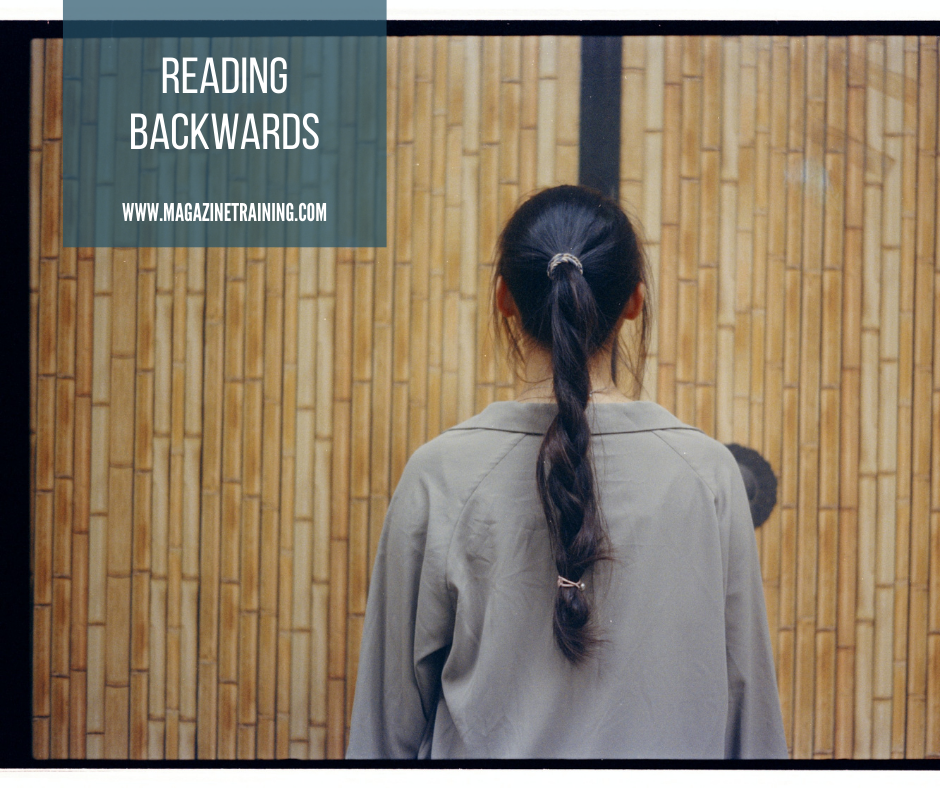
As you edit a magazine, often you start at the beginning of the magazine and work forward, through the content to the end. This is a normal process for editing. However, after multiple cycles of editing, if you always start with the first article, then your attention to detail may decrease as you get to the last article in the issue.
For a near-final draft of the magazine, you can get a fresh perspective by starting on the last page of the magazine and working backwards. This way, you may notice things that you otherwise might have missed. As you get familiar with content, your brain may not see errors, as your brain fills in correct words even if you have them incorrectly in the actual article.
I don’t mean you should read completely backwards, starting with the last word. You can proofread one paragraph at a time, starting with the last paragraph in an article. While it won’t really make sense in reverse, forcing yourself to stop and look at each paragraph, sentence, and word will sharpen your editorial focus.
This exercise can be helpful after you have already done the big-picture editing for meaning and flow. It slows you down enough to catch mistakes such as missing words or typographical errors.
Also, focusing on the last article in your issue of the magazine when your brain is fresh means that the last impression your reader gets (assuming they read the magazine in order, which is not necessarily true) will be a strong, quality article.
The next time you are reading through your magazine to edit articles, try reading backwards!
 By Carla Foote, Fine Print Editorial
By Carla Foote, Fine Print Editorial
Related posts
Magazine Training International’s mission is to encourage, strengthen, and provide training and resources to Christian magazine publishers as they seek to build the church and reach their societies for Christ.

